RAD6 Positively Affects Tumorigenesis of Esophageal Squamous Cell Carcinoma by Regulating Histone Ubiquitination of CCNB1
- PMID: 35321657
- PMCID: PMC8943946
- DOI: 10.1186/s12575-022-00165-z
RAD6 Positively Affects Tumorigenesis of Esophageal Squamous Cell Carcinoma by Regulating Histone Ubiquitination of CCNB1
Abstract
Objective Esophageal carcinoma (ESCA) is deadly cancer worldwide with unknown etiology. This study aimed to investigate the impact and mechanism of RAD6 on the development of Esophageal squamous cell carcinoma (ESCC).Expressions of RAD6A and RAD6B in ESCA were investigated from TCGA dataset and their expressions in tissue sample of ESCA patients and cells were determined. Functional experiments were conducted to explore the impact of RAD6A and RAD6B on malignant characteristics of several kinds of ESCC cells. Animal experiment was established and injected with RAD6A and RAD6B shRNA to evaluate the effect on tumor growth.RAD6A and RAD6B were up-regulated in ESCC cells and tissues. Overexpressed RAD6A and RAD6B similarly increased ESCC cell proliferation, invasion and migration and silencing of RAD6 exerted opposite effects. Knockdown of RAD6A suppressed tumor growth and decreased the level of H2B, as data demonstrated positive correlation between RAD6A and CCNB1 in ESCC tissues.Collectively, this study elucidates that RAD6 is up-regulated in ESCC and promotes the progression of ESCC through up-regulation of CCNB1 to enhance H2B ubiquitination. These evidence provide a novel insight into the pathogenesis of ESCC and might contribute to the development of targeted therapy.
Keywords: CCNB1; Esophageal squamous cell carcinoma; RAD6A; RAD6B; Ubiquitin.
© 2022. The Author(s).
Conflict of interest statement
The authors declare no competing interests.
Figures
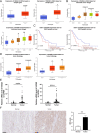
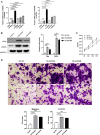
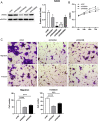
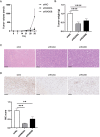
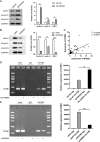
Similar articles
-
RNF168 forms a functional complex with RAD6 during the DNA damage response.J Cell Sci. 2013 May 1;126(Pt 9):2042-51. doi: 10.1242/jcs.122945. Epub 2013 Mar 22. J Cell Sci. 2013. PMID: 23525009 Free PMC article.
-
Alternative Splicing of RAD6B and Not RAD6A is Selectively Increased in Melanoma: Identification and Functional Characterization.Cells. 2019 Nov 1;8(11):1375. doi: 10.3390/cells8111375. Cells. 2019. PMID: 31683936 Free PMC article.
-
Long noncoding RNA lnc-ABCA12-3 promotes cell migration, invasion, and proliferation by regulating fibronectin 1 in esophageal squamous cell carcinoma.J Cell Biochem. 2020 Feb;121(2):1374-1387. doi: 10.1002/jcb.29373. Epub 2019 Sep 12. J Cell Biochem. 2020. PMID: 31512786
-
Lysine-Specific Histone Demethylase 1 Promotes Oncogenesis of the Esophageal Squamous Cell Carcinoma by Upregulating DUSP4.Biochemistry (Mosc). 2021 Dec;86(12):1624-1634. doi: 10.1134/S0006297921120117. Biochemistry (Mosc). 2021. PMID: 34937541
-
Knockdown of DEAD-box 51 inhibits tumor growth of esophageal squamous cell carcinoma via the PI3K/AKT pathway.World J Gastroenterol. 2022 Jan 28;28(4):464-478. doi: 10.3748/wjg.v28.i4.464. World J Gastroenterol. 2022. PMID: 35125830 Free PMC article.
Cited by
-
Ubiquitination and deubiquitination in cancer: from mechanisms to novel therapeutic approaches.Mol Cancer. 2024 Jul 25;23(1):148. doi: 10.1186/s12943-024-02046-3. Mol Cancer. 2024. PMID: 39048965 Free PMC article. Review.
References
Grants and funding
LinkOut - more resources
Full Text Sources
Miscellaneous

